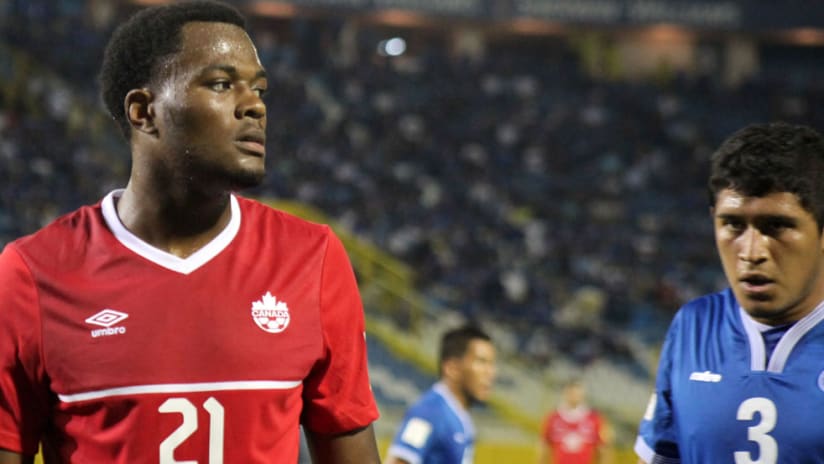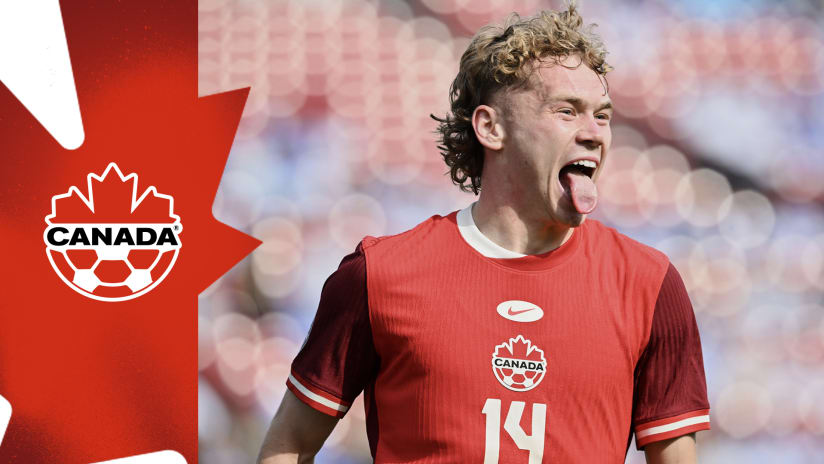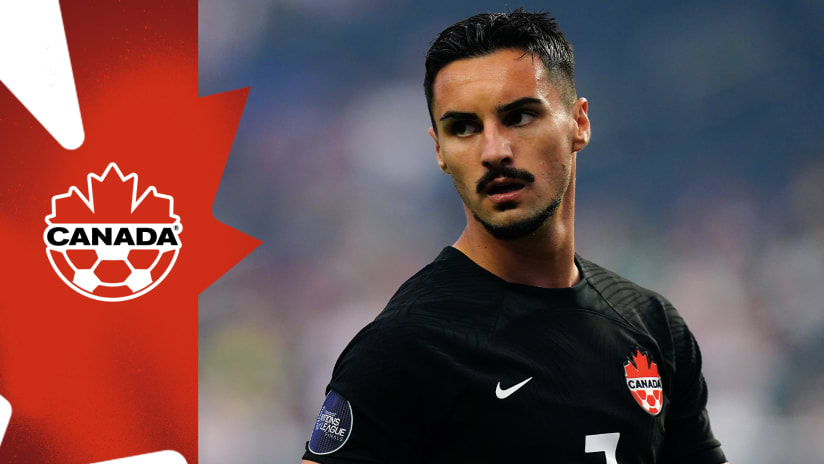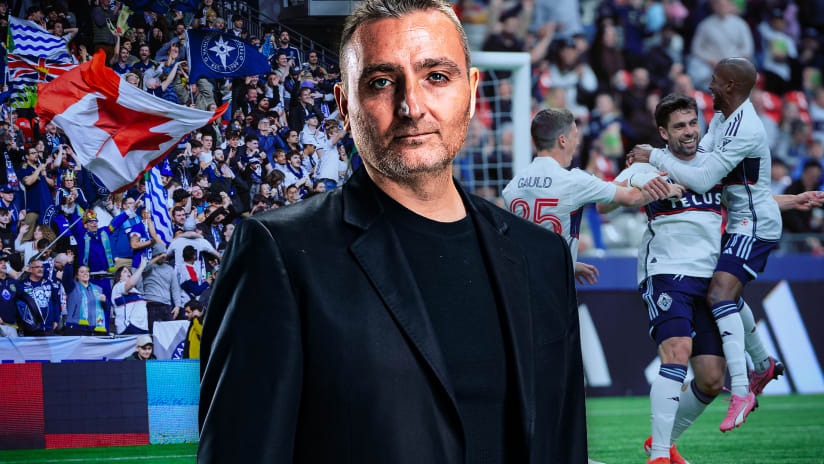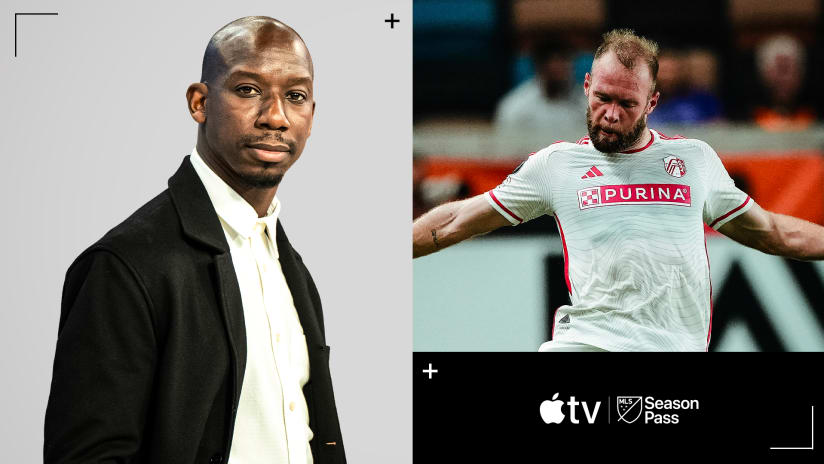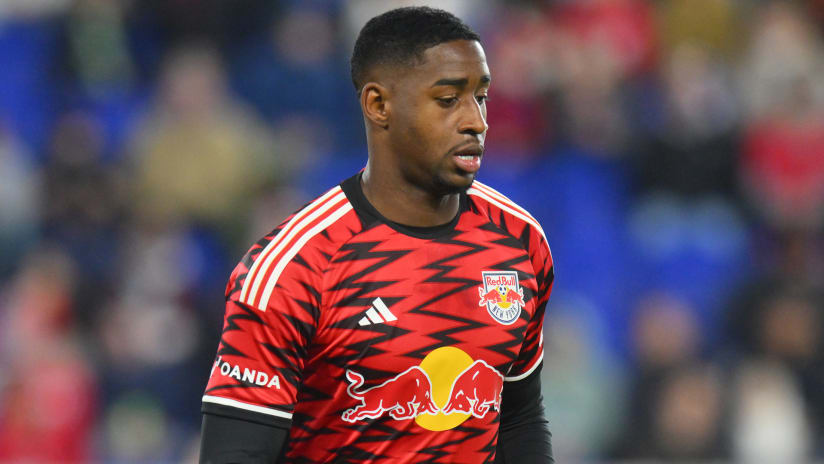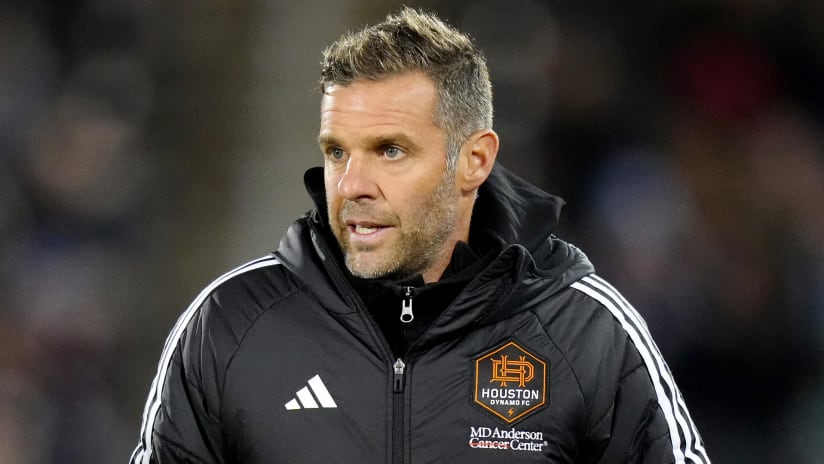VANCOUVER, B.C. -- You can usually sum up a year for the Canadian national team in one of two ways:
- It began with optimism and ended in heartbreak, or...
- It began with pessimism and ended with newfound hope.
It’s safe to say that 2015 fits into the latter category.
Back in January, coming off a horrendous 2013 and mostly empty 2014, many fans of Les Rouges had already written off the team’s chances of reaching the 2018 World Cup. Yet, as 2015 bids adieu, we’re again smitten with that familiar, intoxicating hey-maybe-this-time-they’ll-actually-do-it feeling.
The “it” needn’t necessarily be qualifying for Russia. Just reaching the Hexagonal round for the first time since 1997 would be seen as an overachievement. With the Canadian team carrying some momentum into 2016's qualifying test, and groupmates Honduras and El Salvador still wallowing in disarray… hey, maybe this time they’ll actually do it!
Of course, we’ve been here before, haven't we? Canada won the 2000 Gold Cup...and didn’t reach the Hex. Canada had the “best midfield in CONCACAF” in 2008...and didn’t reach the Hex. Canada “just needed a draw” in San Pedro Sula in 2012...and, well, you get the idea.
But patterns are made to be broken. Perhaps in 12 months’ time, we'll be back here with a new narrative for Canada and a new phrase to sum up the year: It began with hope and ended with glory.
For now, let’s look back at 2015 to see how a program that was left for dead following that momentous collapse in the last World Cup qualifying cycle has seemingly clawed its way back to relevance.
Farewell, DeRo; Hello, Cyle
On Jan. 19, in a friendly against Iceland, Dwayne De Rosario scored his 22nd international goal in what would turn out to be the last game of his career for Canada. Several months later, the country’s all-time leading scorer officially announced his retirement from the sport.
At the same time, De Rosario’s heir apparent was just beginning his meteoric rise. On Jan. 15, four days before DeRo’s swan song, Cyle Larin went first overall in the MLS SuperDraft to Orlando City SC. He then won AT&T MLS Rookie of the Year with 17 goals for the Lions, and came second in voting for Canadian male player of the year after scoring four goals for his country.
His biggest national-team goal came against Honduras in a World Cup qualifier in November. The goal was originally credited to Will Johnson, who joked afterwards that Larin could have it since he had a better shot at breaking De Rosario’s goal record.
We’re still a long, long way from that. Even so, the timing of Larin’s rise couldn’t have possibly been better.
Grinding It Out
For years, Canada’s Achilles heel in World Cup qualifying was its inability to get points on the road in Central America. The arrival of head coach Benito Floro—and his emphasis on a tight, defensive-minded structure—brought with it the hope that this trend could finally be reversed.
How did that pan out in 2015? Two World Cup qualifiers in Central America, two draws. Those came after a 0-0 draw in Panama in a friendly in late 2014, meaning Canada is now undefeated in three straight games in Central America, following a decade of nothing but losses in the region.
Of course, the big test is going to come in September 2016, when Canada head back to the place that’s been a graveyard for their World Cup dreams in recent cycles: San Pedro Sula, Honduras. This time, though, if Canada go in needing “just a draw,” at least they’ll have recent evidence that it can be done.
That’s a Familiar Shape
Even those without a keen interest in tactical analysis (such as the author of this article) should have little trouble discerning Floro’s preferred approach. You can bet your house on him running out a 4-1-4-1 formation in any given game, with extra protection for the back line and generally a big target man (like Larin or Marcus Haber) up top.
When questioned, Floro has suggested he simply doesn’t have the personnel to play a more wide-open system. And while he’s not necessarily wrong on that point, some fans have said they would rather see the team lose 3-1 in entertaining fashion than grind out a scoreless draw (this, despite the fact that a boring draw is worth more points than an exciting loss in qualifying).
Either way, don’t expect Floro’s 2016 tactics to look much different than his 2015 tactics or his 2014 tactics; after all, at the end of the day, it’s points earned on the road—not entertainment value—that make or break a qualifying campaign.
No Shine at the Gold Cup
Speaking of 0-0 scorelines, the outlook on the team’s chances of reaching Russia in 2018 hit a nadir at last summer’s Gold Cup, the second straight edition of the tournament in which Canada was held goalless.
Each game offered its own unique brand of heartache to Canadian fans, from Larin’s empty-net miss against El Salvador to the stoppage-time goal conceded against Jamaica to Haber’s disallowed-for-offside game-winner against Costa Rica. All in all, it left fans with a bitter taste in their mouths—and the Canadian team without a shot at the 2016 Copa America Centenario.
Here Comes the Cavalry
But the summer wasn’t a total bust for the team. FC Dallas attacker Tesho Akindele committed himself to Canada in a pair of World Cup qualifiers against Dominica in June, and whether he or anyone else knew it at the time, he was at the vanguard of a very promising trend.
Following the Gold Cup, the floodgates really opened. QPR winger Junior Hoilett, after nearly a decade of uncertainty, shockingly committed to his birth nation in September. He joined the Canadian team for an October friendly against Ghana, alongside Lucas Cavallini (who hadn’t played for Canada since 2012), Wandrille Lefevre (who’d just recently gotten citizenship) and Fraser Aird (who’d previously played for Scotland’s youth teams).
All of a sudden, the miserable Gold Cup memories were replaced with sparkly dreams about where this new crop of talent could lead Les Rouges.
Location, Location, Location
The Canadians, quite simply, don’t play enough home games. That scarcity has led to not only a sense of disconnect between the team and its potential fan base, but plenty of bickering between fans in different cities whenever the venue of a home game is announced.
Hackles were predictably raised when the federation announced that, for the first time since 2004, the team would play its November qualifier against Honduras in British Columbia—specifically, at Vancouver’s BC Place. Some fans preferred a frigid outdoor locale, such as Edmonton or Ottawa, to “freeze out” the opponents.
But in the end, more than 20,000 fans (the vast majority of whom were in Canadian red) braved the chilly (by west-coast standards) conditions at an open-roofed BC Place and saw the good guys emerge with a massive 1-0 victory.
All of the good feelings engendered by that result meant much less hackle-raising upon the news that March’s qualifier against Mexico will also be held at BC Place. Tickets are selling briskly for that match, and now everyone is waiting to learn where Canada’s final World Cup semifinal-round qualifier, against El Salvador on Sept. 6, will take place.
No matter where that game is held, its outcome will decide whether 2016 follows the classic script of optimism melting into tragedy, or if this is the year this team rewrites Canadian soccer history.

